“Why does anybody want to be famous? You know what’s important to me? Having lunch! Pasta! Seeing my friends! Is that so crazy? ”
Sometime in Italian history (around the 14th century) a chef thought, “Everyone puts all this great stuff on pasta. I wonder what would happen if I put great stuff IN pasta?” Hence, the ravioli was born. There is something so seductive about these pillows of pasta goodness. They look great, and are fun to eat. Once you master the technique of making them, infinite fillings, sauces, and pasta types can add a massive depth to your repertoire. Traditionally, they are filled with ricotta cheese. Sometimes spinach and spices are added, regionally. Once the concept of ravioli spread around the world, all manner of craziness was added to the dish. Smoked salmon and cream cheese ravioli in basil pasta with nutmeg cream, and liver mousse ravioli in mushroom pasta with rosemary demiglace, have happened. Italian purists might wince at such deviations, but I find the vehicle too tempting not to play around with, a little bit.
Making pasta at home is a skill I highly recommend picking up. Like most ingredients, the homemade version is ten times better than anything you can buy. If you have eggs and flour, you have what you need. To upgrade your pasta game, a pasta roller with a couple different sized cutters, and some semolina flour will get you there. All purpose flour works fine, and a rolling pin will do the job. The important thing is the method. The key to proper pasta texture is folding. “disks of lamination” are created by folding and rolling your pasta. At least seven folds must occur to get the right mouth feel. If you do that, and don’t over cook it, you will be amazed at how easy it is to make great pasta.
Pasta can be made ahead and liberally floured, then frozen in plastic bags. I prefer this to drying, as I find the texture superior. The same approach works for these ravioli, but freeze them in a single layer, then bag them once frozen. Flavored pastas were all the rage, back in the ‘80’s. You can add flavor and color to pasta by incorporating herbs, tomato paste, mushroom powder, or other ingredients into the dough. Here, we use saffron. Way back then, some chefs even used squid ink pasta. It was black, and tasted like ass. Sometimes, just because you can do something, it doesn’t mean you should.
This dish came about in response to a question posed on Instagram. I posted a picture of this pumpkin:
and solicited ideas on what to do with it. A. J. Carillo, over at Deer Tree Farm and Agroforest suggested pasta, and inspired me to make the following recipe. To make your own pumpkin puree, click here.
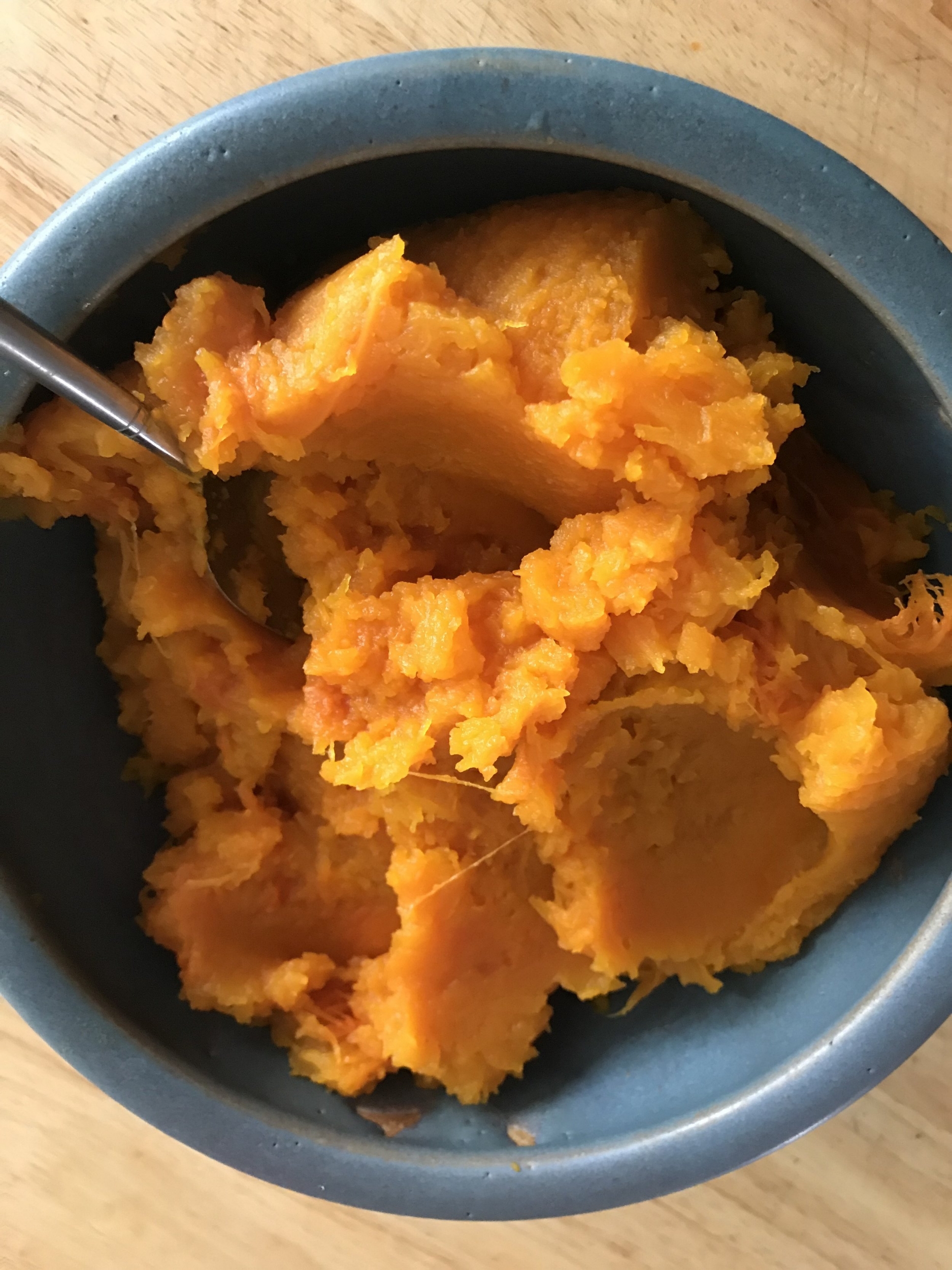
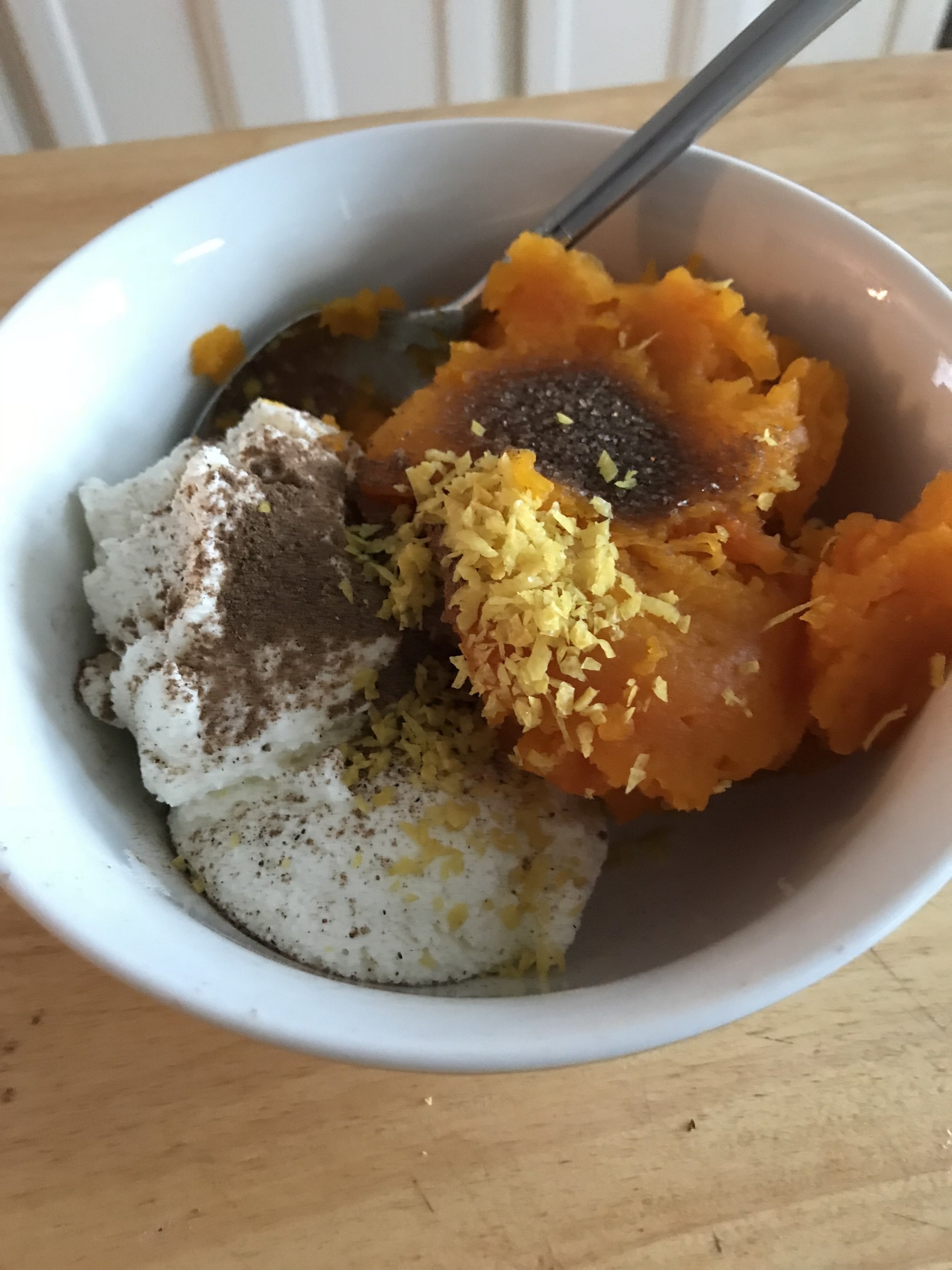
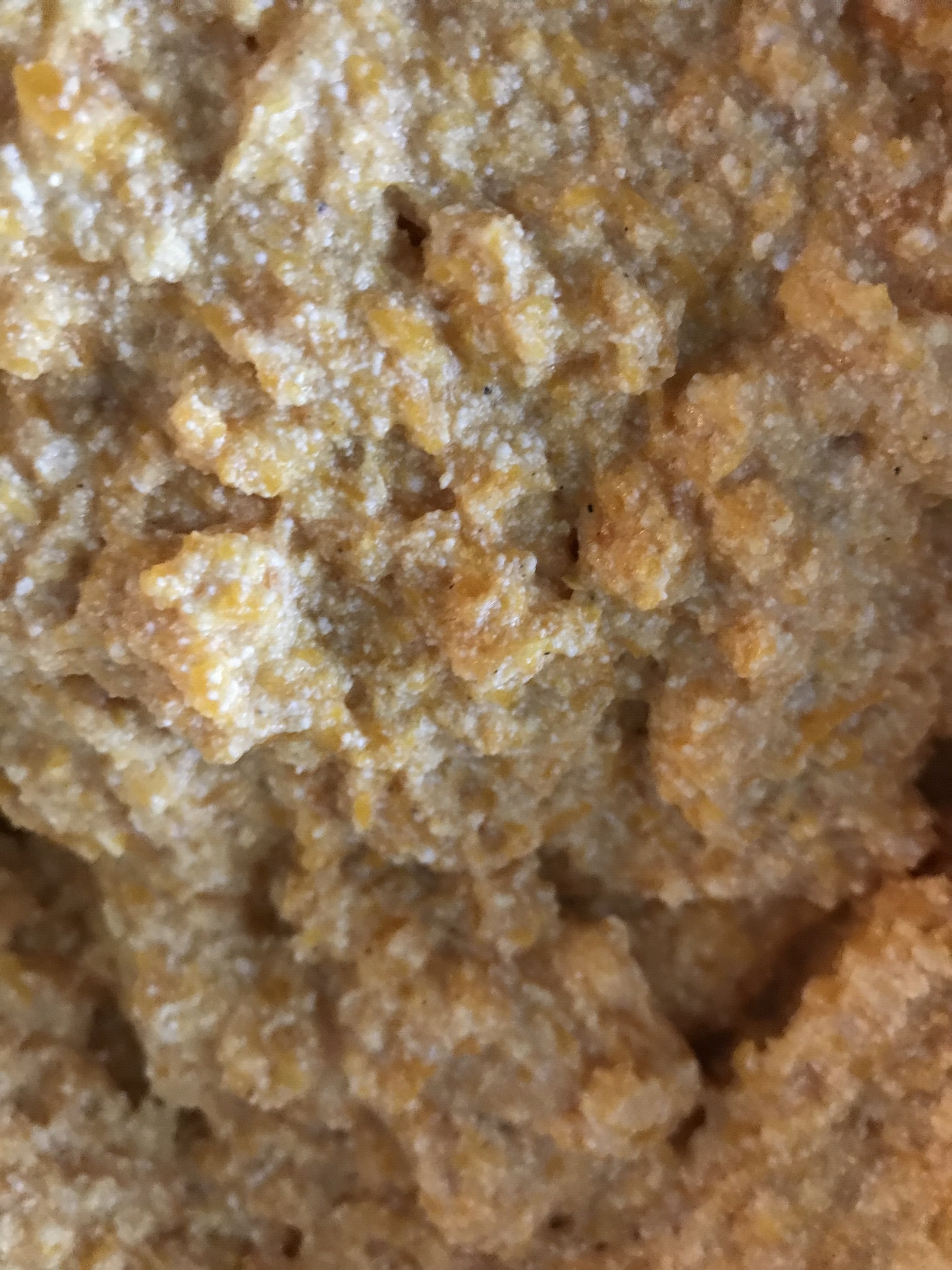
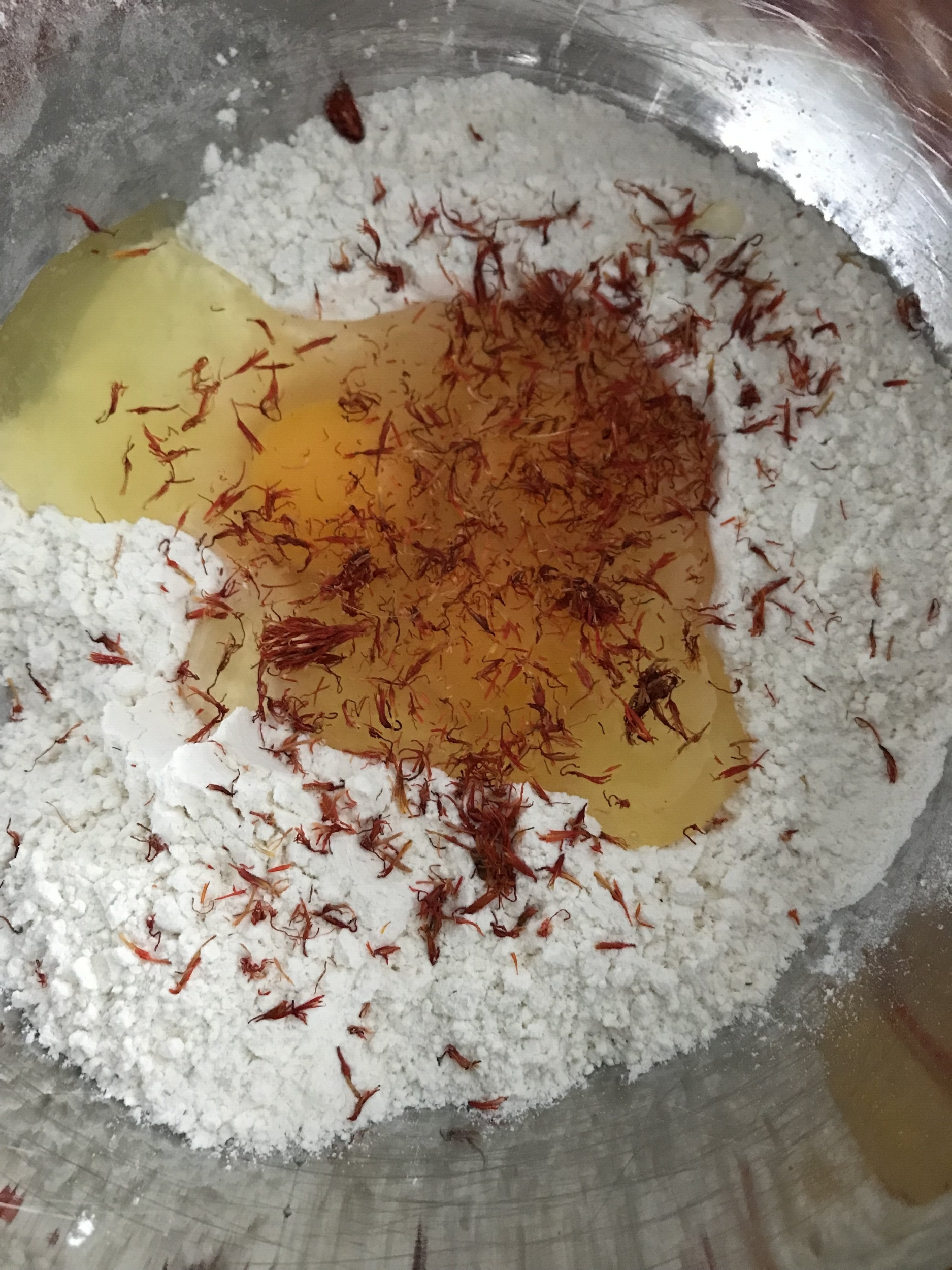
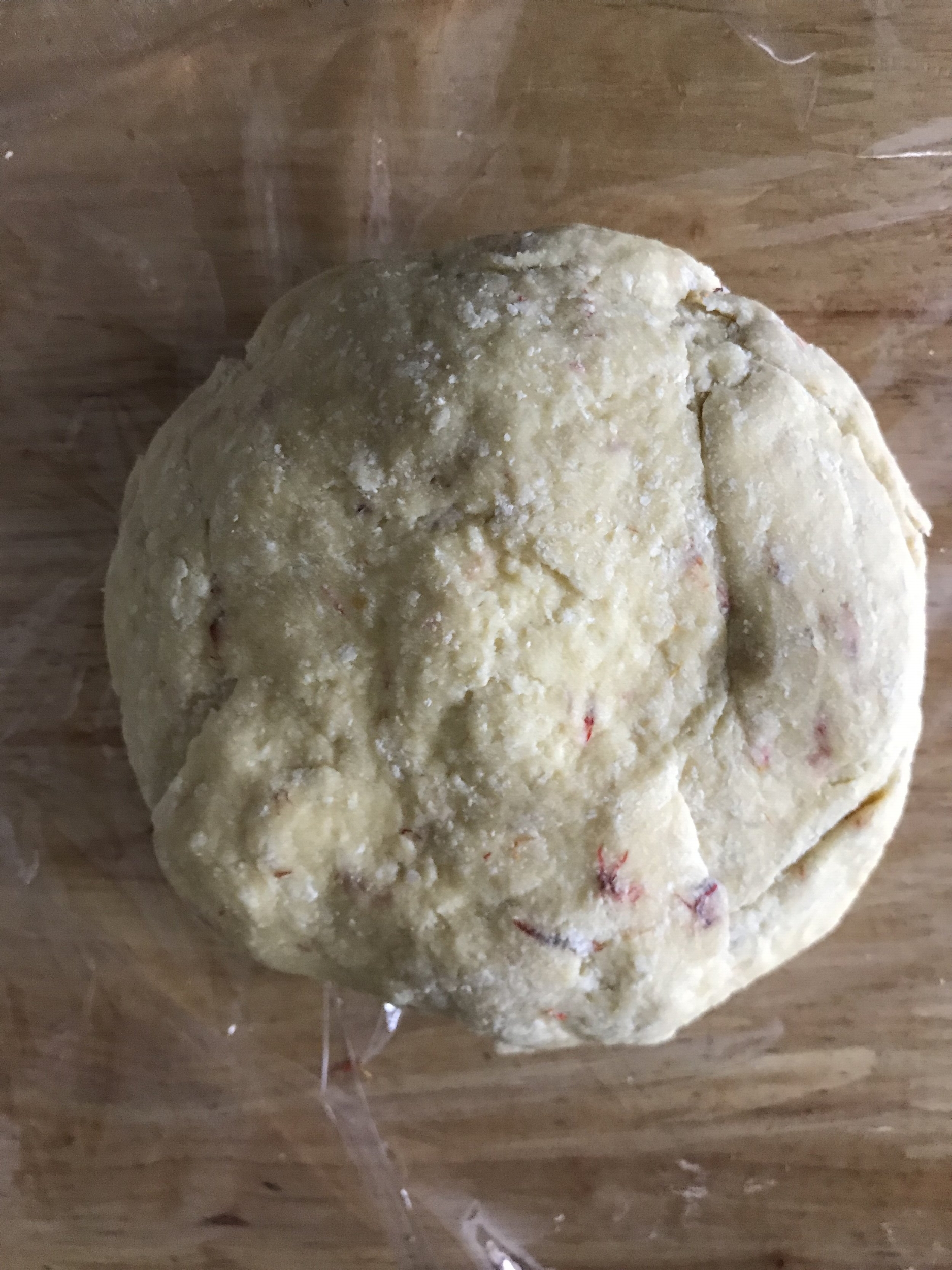
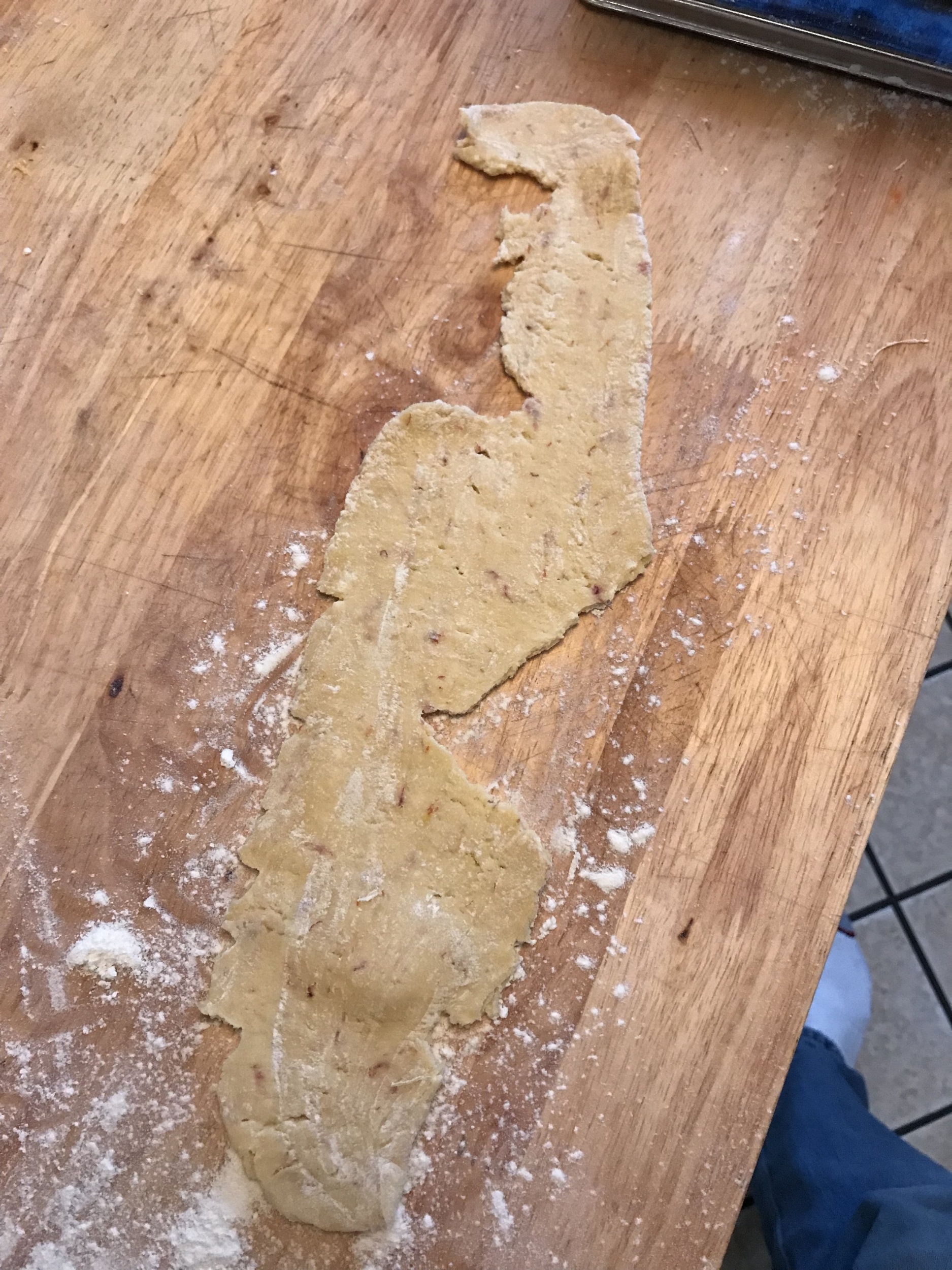
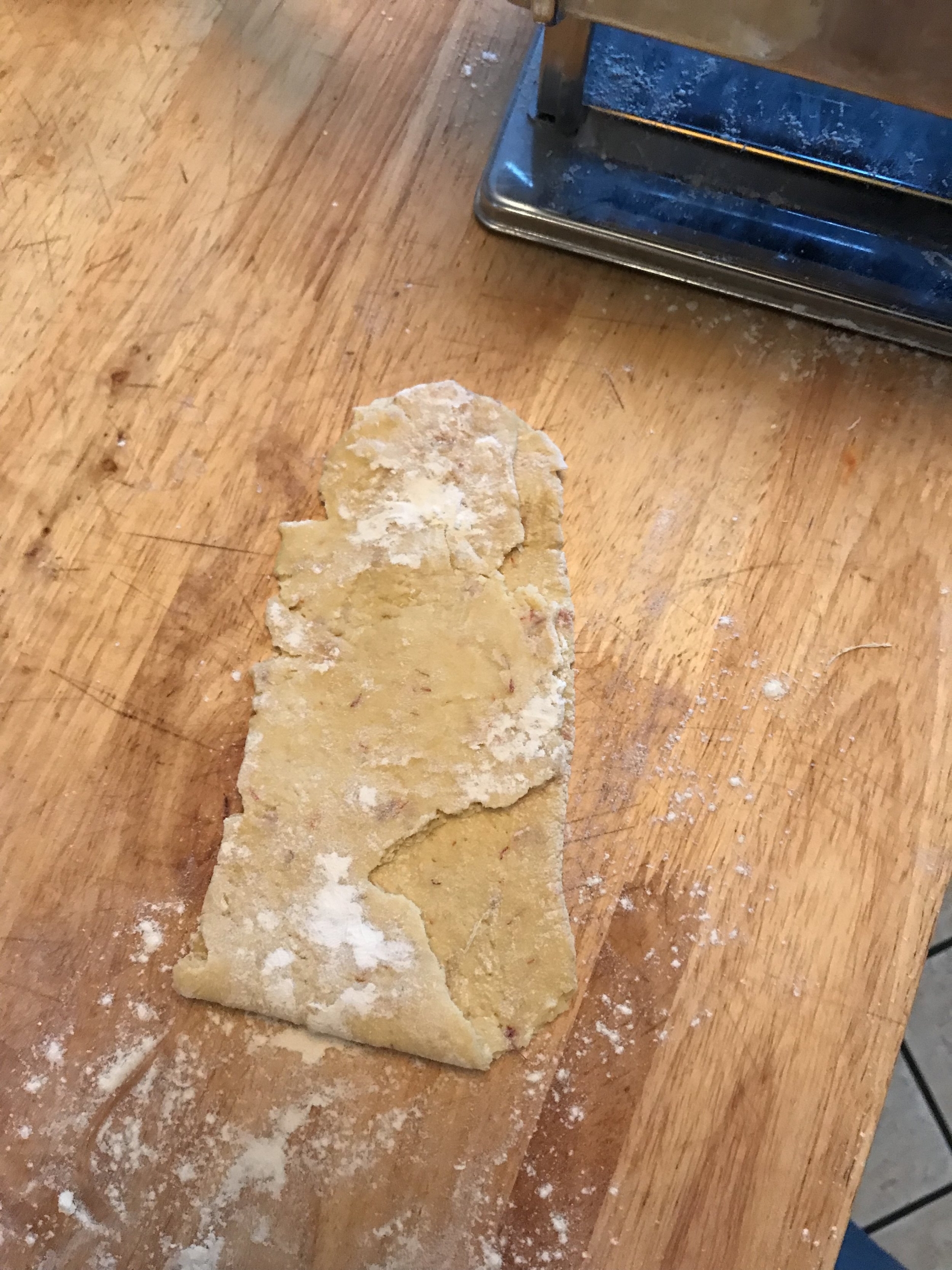
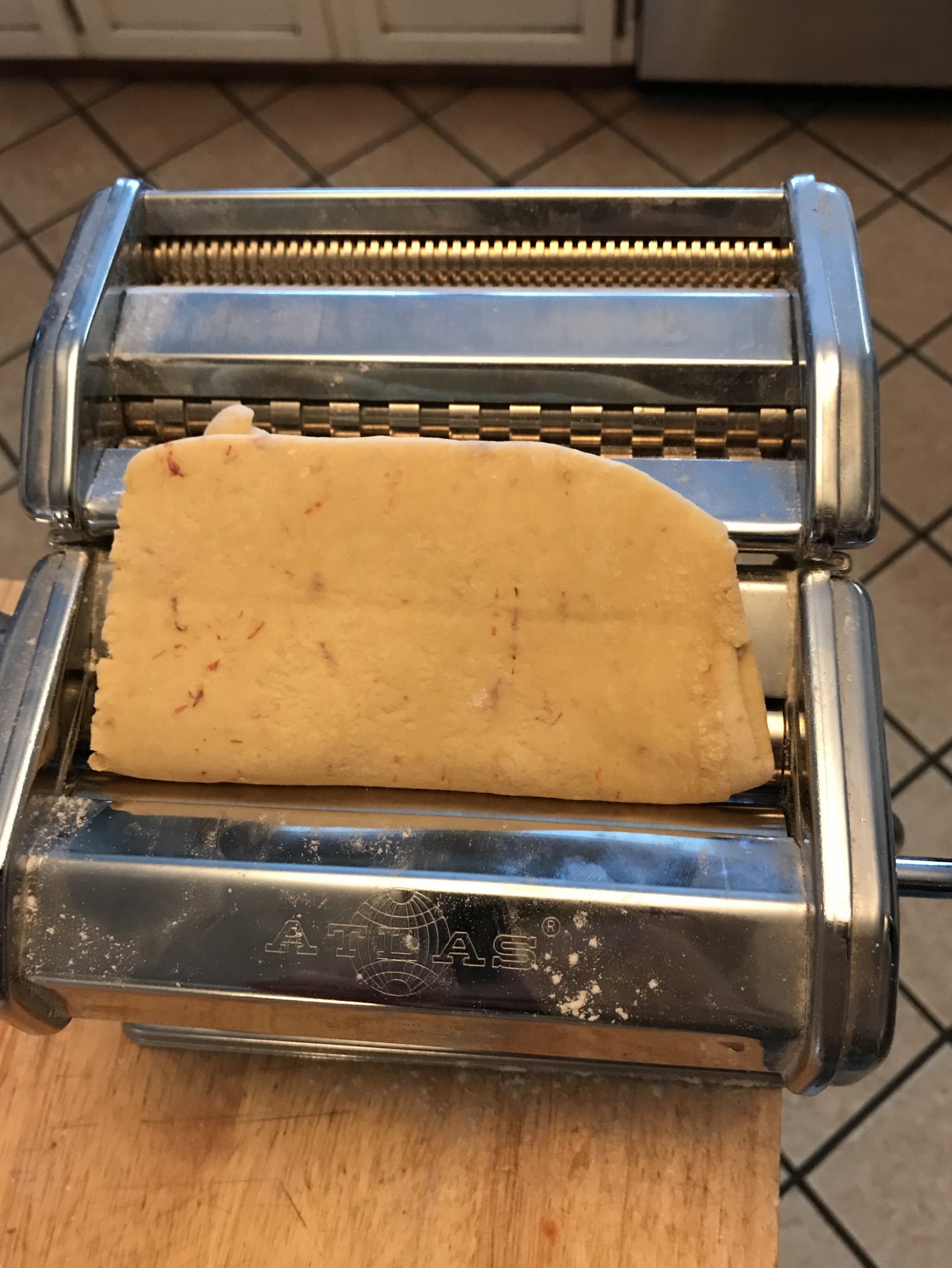
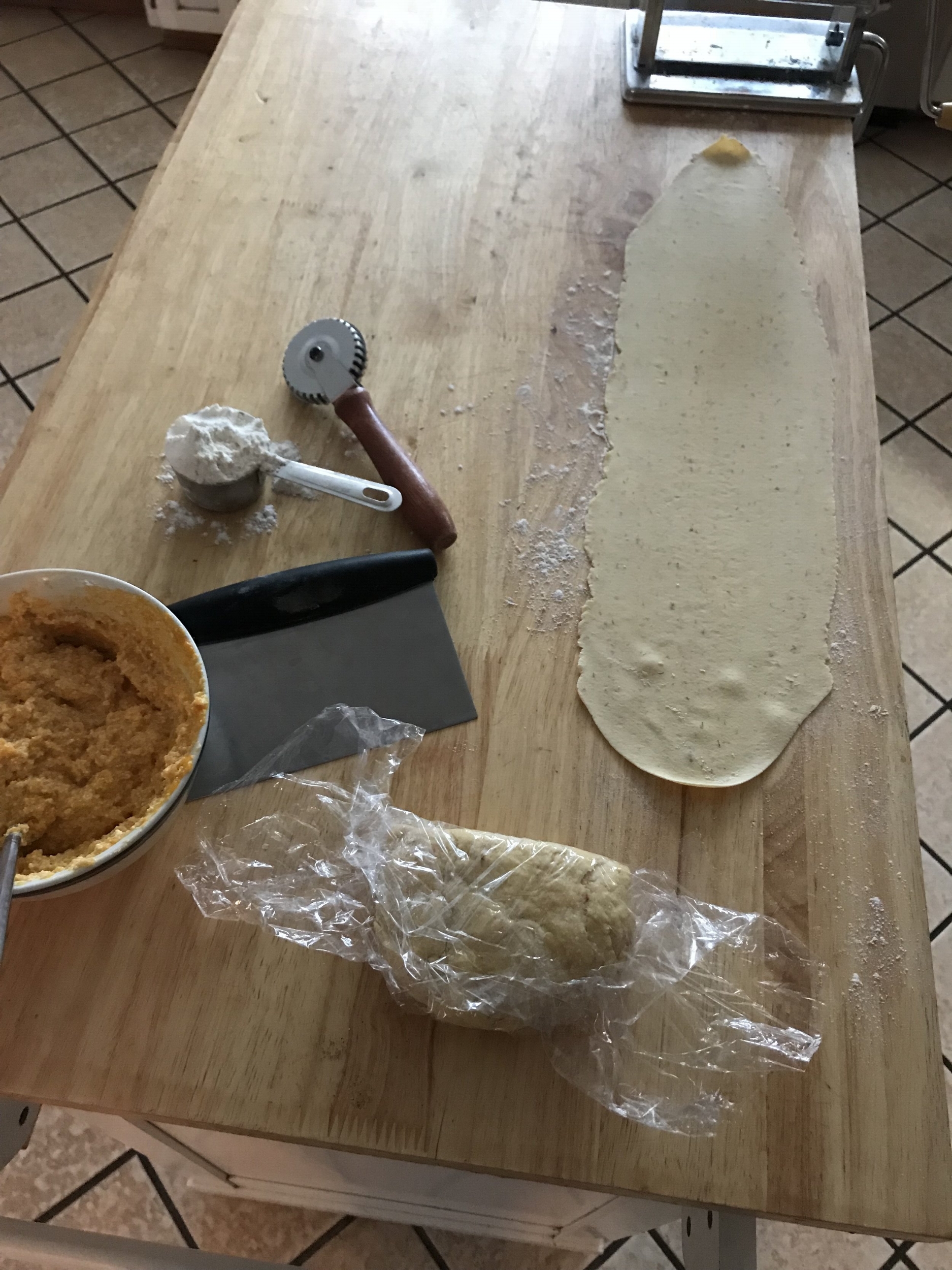
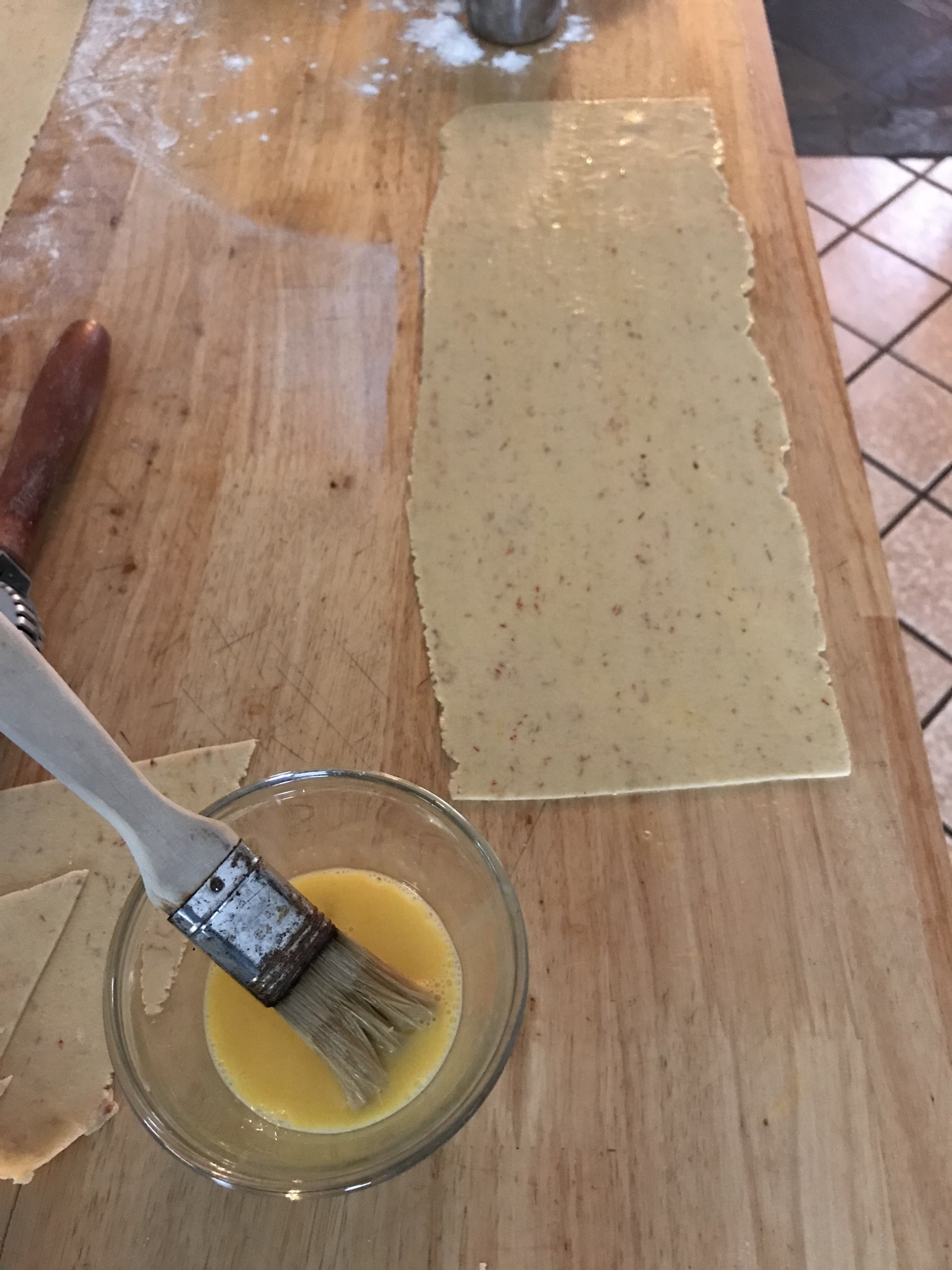
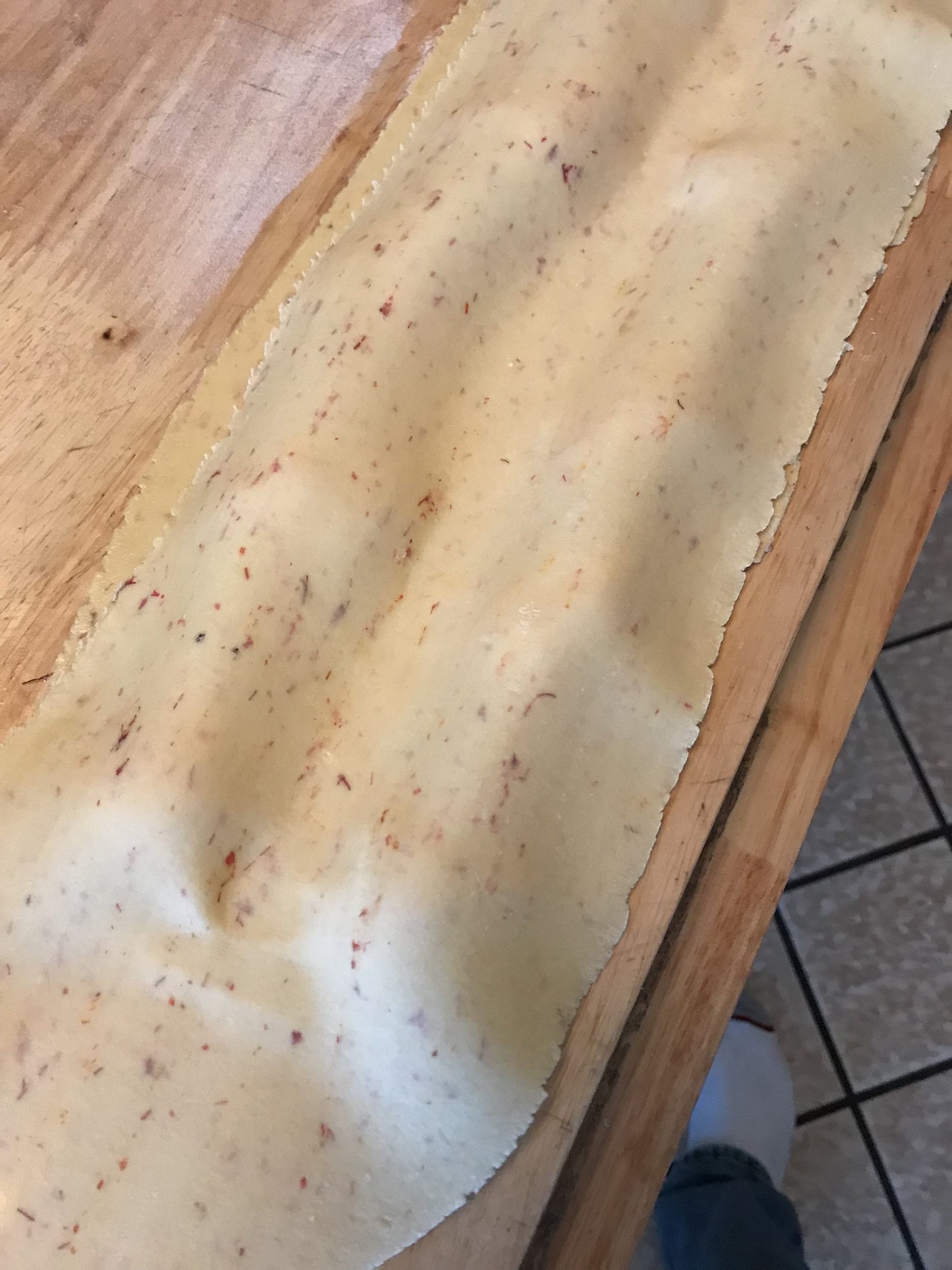
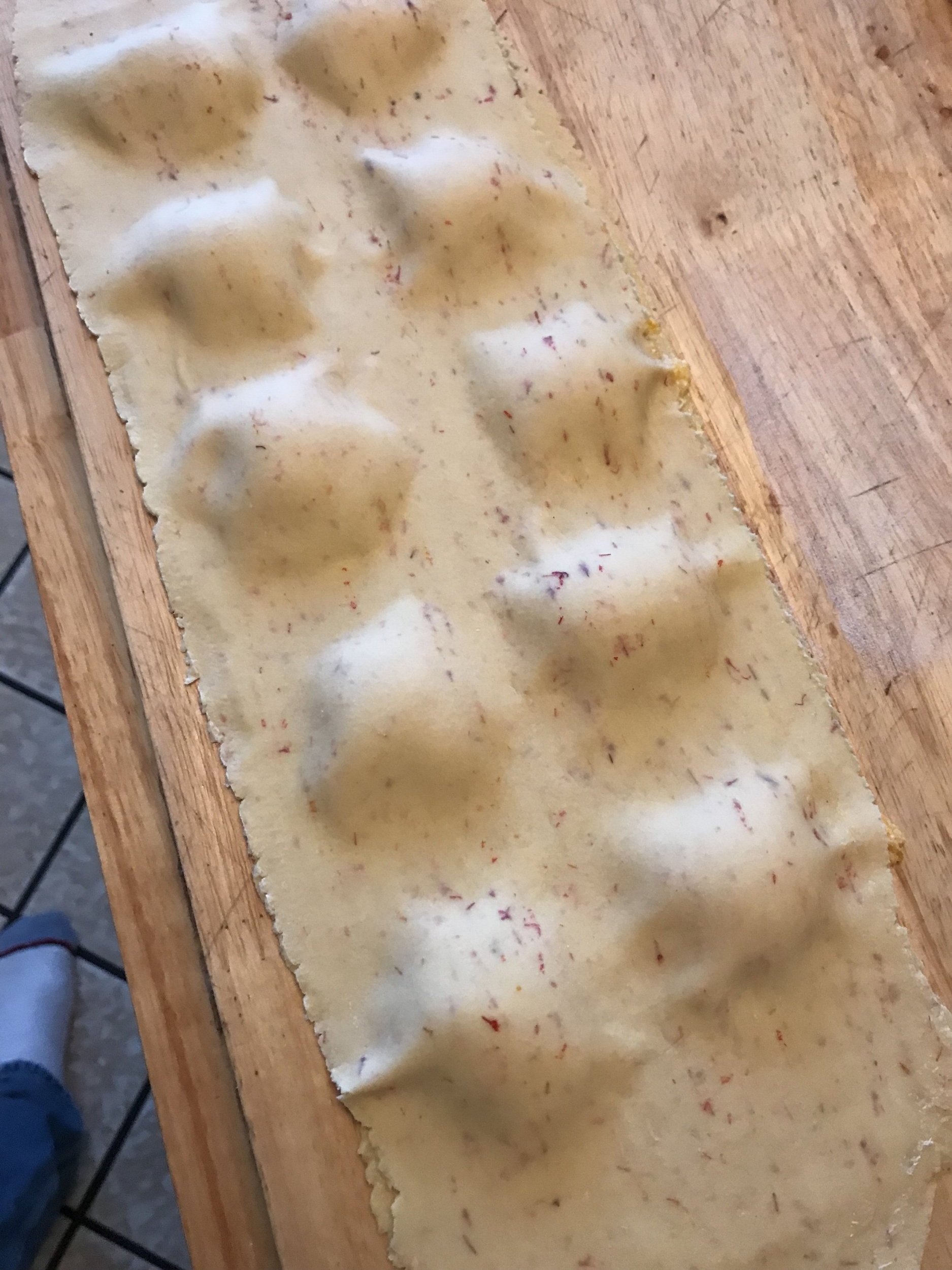
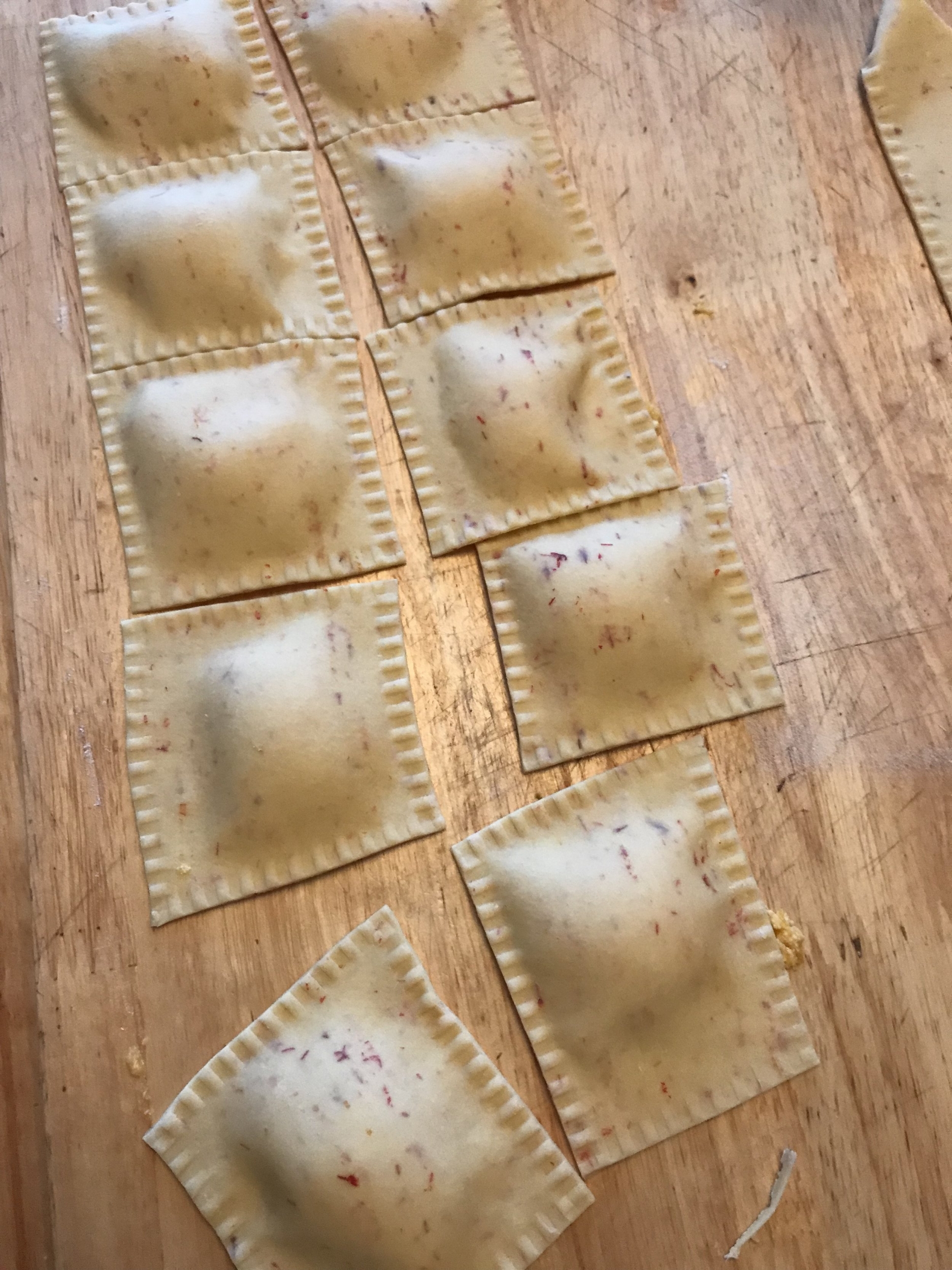
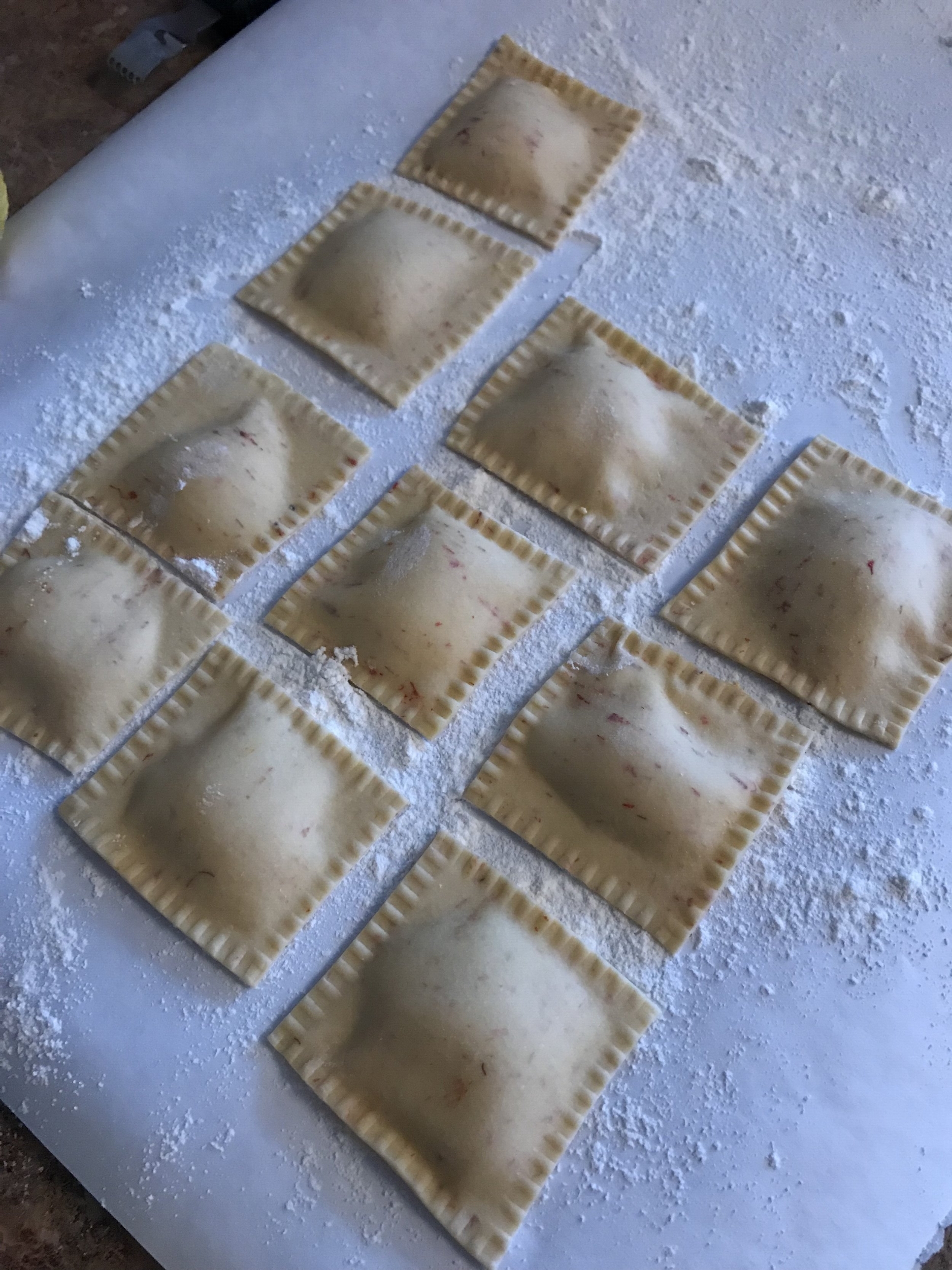
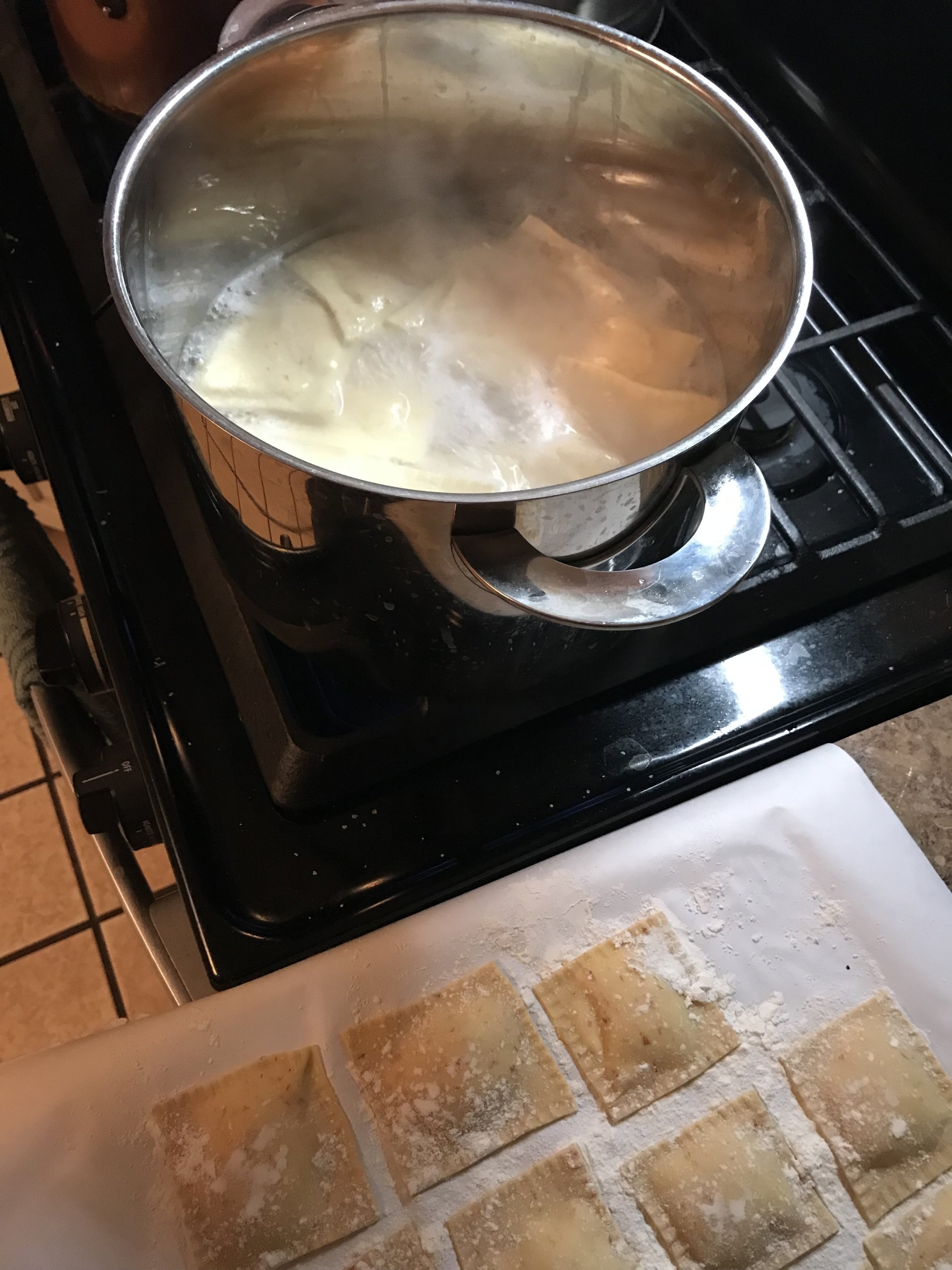
The products below are Amazon Affiliate links. If you buy through them, I receive a small commission with no added cost to you.




